All issues

Volume 8 (2000)
- Issue 1-2 Pages 1-
Volume 8, Issue 1-2
Displaying 1-3 of 3 articles from this issue
- |<
- <
- 1
- >
- >|
-
[in Japanese]2000 Volume 8 Issue 1-2 Pages 1-4
Published: December 31, 2000
Released on J-STAGE: March 19, 2010
JOURNAL FREE ACCESSDownload PDF (482K) -
Izumi Sawada, Kazuko Saeki, Hisako Izumi2000 Volume 8 Issue 1-2 Pages 5-12
Published: December 31, 2000
Released on J-STAGE: March 19, 2010
JOURNAL FREE ACCESSThe purpose of this research was to identify elderly persons' responses to group-work about home care. Group-work was one aspect of a health education offering that was designed for elderly persons age 60 and older who were members of elderly clubs in communities in and around Sapporo City. One hundred and one people participated.
Prior to the group-work participants filled out a questionnaire that inquired about their experience caring for another and their interest in caring, Instrumental Activities of Daily Living scale (IADL) and Index of PGC moral scale (QOL) . In addition, demographic data was collected. After the interven-tion, participants evaluated their group-work interactions. The responses indicated that elderly had a positive response to group-work. They reported that they were able to express themselves and learn from other members. Statistical analysis demonstrated that related factors were IADL, educational background, interest in caring, caring experience, living with children and gender. It is important to consider these factors when planning group-work for the elderly.View full abstractDownload PDF (888K) -
—To Make the Employees Change Behaviror—Yoko Yamaguchi, Norimichi Iwama2000 Volume 8 Issue 1-2 Pages 13-19
Published: December 31, 2000
Released on J-STAGE: March 19, 2010
JOURNAL FREE ACCESSWe have educated the employees judged for “following-up” at the annual medical check-up. However, there are many employees who must change their life-style. In this study, we tried to educate 14 employees with slight hyperlipidemia, taking notice of self-care behavior and implemented one-to-one education.
We make the president of the company cooperate with our project, resulting that the mean percentage of attendance was more than 90%. And for adding the factor of one-to-one education to the group education, we 1) made personal cards in which the data of the annual medical check-ups for several years were shown, 2) measured their body fat ratio, 3) returned the comment on the questionary about the meal they had taken, and 4) were consulted individually.
The questionary obtained from 12 employees before and after group education showed that the group education we had implemented made all the employees change their life-style. Furthermore, mean values of body weight and total cholesterol at the medical check-up in 1999 were significantly reduced by 2.6kg and 13.5% respectively, and triglyceride had a tendency to decrease, compared with those in 1998.
Thus, we demonstrated that it is very important to lead the employees to change behavior and the group education we implemented is one of useful methods which lead the employees to change behavior.View full abstractDownload PDF (701K)
- |<
- <
- 1
- >
- >|